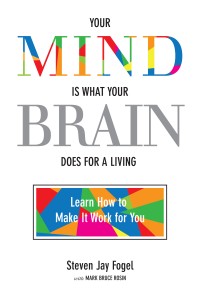Reflect on Your Behavior to See What Causes You to Act as You Do

Besides noticing the difference between your beliefs and attitudes and those of other people, another way to uncover your Organizing Principles is to reflect on your behavior to figure out the beliefs and core issues that cause you to act as you do.
Start with observing the specific things you do routinely. For example, soon after I started therapy I noticed the great lengths I went to in order to avoid emotional pain or even to admit to myself that the pain is there. I found it almost impossible to cry or even to experience the grief and anger I felt about my father’s death.
I came to realize that my programming interpreted pain as dangerous; that after my father’s death my default programming’s primary goal was to take responsibility for myself and my mother and, by extension, everyone else, since my inner world believed it was the only way things could possibly work out because others weren’t dependable. My default programming interpreted pain as dangerous based on the belief that if I allowed myself to experience pain, it would distract me from the goal of taking care of everything for everyone.
Gradually, I came to see that it wasn’t just pain that my programming interpreted as dangerous; it judged all emotions to be dangerous. I came to recognize that this interpretation caused me to avoid most feelings at any cost. Recognizing this belief led me to uncover my second Organizing Principle: “Painful feelings are dangerous.” (The corollary is all feelings have the potential to be painful, so all feelings are dangerous.)
Sometimes a psychological observation will hit home and help you accurately pinpoint and define your Organizing Principles. Early on, my first therapist explained, “The idea that we can have control is an illusion, even though we maintain the idea that things can be controlled.” Examples are planning to play basketball or golf and being rained out; trying to start your car and discovering your battery has died. Anything can happen to negate what you believe is controllable. But, as my therapist pointed out, that doesn’t mean that some of us don’t attempt to be in control.
The desire for control often works on an unconscious level. Some years ago I went to a UCLA management seminar. It started with the instructor having 100 of us take a personality test. After he reviewed our tests, he called the names of twelve people and asked them to step out of the room to participate in an exercise. He explained to the rest of us that the twelve were chosen based on their tests. He identified six of them as “controlling types” and the other six as passive types who did not want to be in control. He told us all twelve would be brought back into the class and divided into two teams, one made up of those with “control issues,” the other with “non-control issues.” The teams would have a competition in which they would be asked to construct a rocket ship out of Legos.
The instructor predicted that each of the controlling people would immediately grab something to establish his or her “control”: Perhaps one would pick up the box of Legos or the instructions and another the tools, each of the six unconsciously believing an action would give him or her control. He predicted that the non-controlling people would do the opposite because they would not want to offend the others. He also predicted that the non-controlling people would waste a lot of time organizing themselves because none of them would want to take charge and that it would be just the opposite with the other group. He brought the people back into the room and told them about the game of building the Lego rocket ship without letting them know how and why they were chosen to be on the team to which they were assigned. It was amazing to see that each group acted exactly as he had predicted!
The point of this exercise was that even though the instructor could identify from their personality tests who was a controlling type and who was a non-controlling type, the people themselves didn’t necessarily realize they were controlling or non-controlling. The controlling types didn’t see grabbing the box, the instructions, or the tools as attempting to be in control; they just did what seemed natural to them. If you asked them why they approached the task the way they did, they might answer, “Because I like to get right down to business” or “Because it was the efficient way to do it.”
I had not consciously known how important an issue control was to me until my therapist talked to me about it. I saw that I tried hard to take control of myself and my emotions. I also saw that I tried hard to take control of situations, and that most of the time I did this by trying to dominate the situation.
I started asking myself, “Why is being in control so important to me?” Gradually another question occurred to me: “Do I believe I need to be in control to be safe?” I saw that the answer was yes. The anxiety I experienced often came from a fear that I was losing control and that I would end up being exposed to something I feared, whereas my programming’s interpretation was that if I was in control I could get what I needed. With this insight, I realized that another of my Organizing Principles is “I must stay in control to be safe.”
An excerpt from my recent book, Your Mind Is What Your Brain Does for a Living, now available at Amazon.
- 3 Nov, 2014
- Posted by Steve Fogel
- 0 Comments



COMMENTS